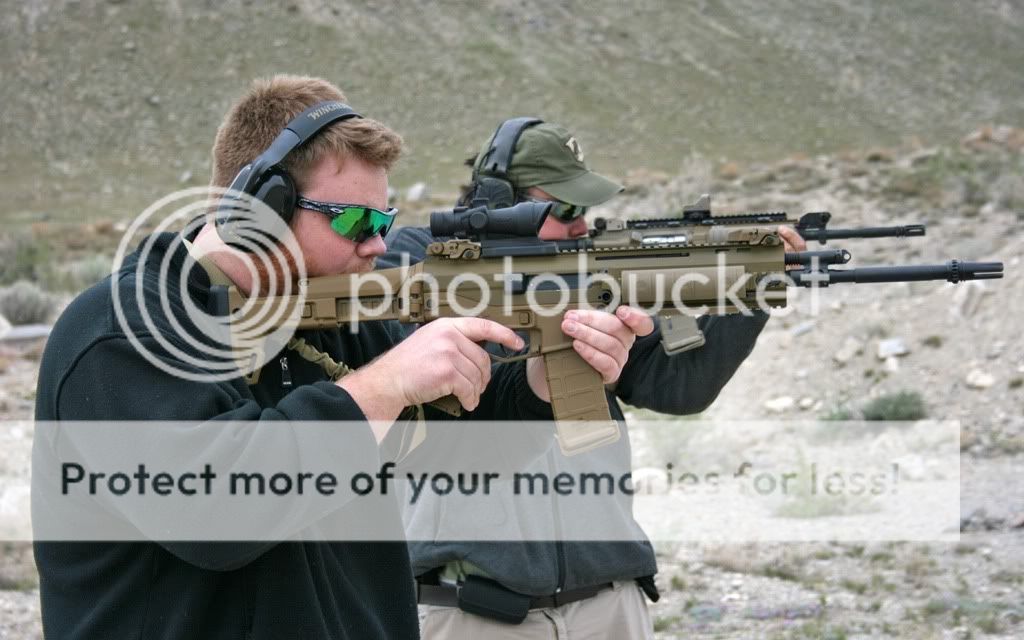This has started troubling me and is quite puzzling to me actually.
We all know NATO (but most specificly the US) have basicly given a large push for all NATO members to adopt modern assault rifles/carbines firing the 5,56mm NATO round.
We all know that both the 5,56mm and 7,62mm NATO rounds kill and since most wars are now fought against guerrillas and insurgents that don't have proper body protection (not that it would help significatly) so the use of a more powerfull is not necessary.
BUT since the tides of war are turning more and more into the urban enviroment the question of actually hitting the enemy is becoming a worring one, in my opinion.
The 5,56mm NATO rounds does not have enough force to penetrate concrete like butter (unlike some "realistic" games ...*cough cough*BF3*cough cough*).
The use of the heavier, more powerfull 7,62 round, imho, is now more than justified because in many ocassions a soldier will be faced with a bunch of enemies behind thick objects. Because every corner and cranny in an urban enviroment can hide an enemy that can instantly turn your heart into jelly the best option is to just shoot trough the said objects, thing I believe is hard now due to lol5,56.
I write this since Portugal as allways used 7,62mm NATO battle rifles (namely the Portuguese G3 models, Galil AR and ARM and formerly the FAL and AR10) wich have a reputation among current/previous Armed Forces members of packing one hell of a punch.
We all know NATO (but most specificly the US) have basicly given a large push for all NATO members to adopt modern assault rifles/carbines firing the 5,56mm NATO round.
We all know that both the 5,56mm and 7,62mm NATO rounds kill and since most wars are now fought against guerrillas and insurgents that don't have proper body protection (not that it would help significatly) so the use of a more powerfull is not necessary.
BUT since the tides of war are turning more and more into the urban enviroment the question of actually hitting the enemy is becoming a worring one, in my opinion.
The 5,56mm NATO rounds does not have enough force to penetrate concrete like butter (unlike some "realistic" games ...*cough cough*BF3*cough cough*).
The use of the heavier, more powerfull 7,62 round, imho, is now more than justified because in many ocassions a soldier will be faced with a bunch of enemies behind thick objects. Because every corner and cranny in an urban enviroment can hide an enemy that can instantly turn your heart into jelly the best option is to just shoot trough the said objects, thing I believe is hard now due to lol5,56.
I write this since Portugal as allways used 7,62mm NATO battle rifles (namely the Portuguese G3 models, Galil AR and ARM and formerly the FAL and AR10) wich have a reputation among current/previous Armed Forces members of packing one hell of a punch.
Spoiler!
G3 all day, every day :IS2:


